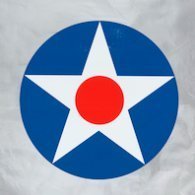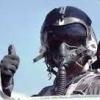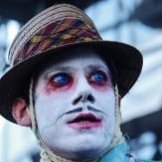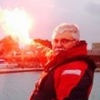Search the Community
Showing results for tags 'PTO'.
-
F6F-5 Hellcat Late (8229) 1:48 Eduard ProfiPACK The Grumman Hellcat was a US Naval World War II carrier-based fighter aircraft designed to replace the earlier Grumman Wildcat. Although the two aircraft do look externally similar, the Hellcat was a completely new design that was fresh from the drawing board, and featured the Pratt & Whitney R-2800 as used by the Chance Vought Corsair and the Republic Thunderbolt, amongst others. It proved to be a well-designed fighter able to stand up to the rigors of carrier operations and the rough air fields used in the Pacific Theatre of operations. Grumman's initial design was so well-sorted that the Hellcat became the least revised aircraft of WWII. In total 12,200 Hellcats were built for the US Navy, The US Marine Corps and the Royal Navy, helping the Hellcat achieve more kills in WWII than any other allied fighter. The -5 was the second production type with a more powerful variant of the R-2800 that was further augmented by adding water injection, whilst improvements to the flying surfaces and the armoured windscreen enhanced performance and survivability, plus adding a centreline station for a drop-tank to extend range as the missions stretched further into enemy territory during the Island Hopping phase of the war. Most other variants were based on the -5, given a letter suffix depending on what equipment was fitted. Post war the Hellcat was phased out of day fighter service, but continued in US service as late as 1954 as a night fighter. One notable exception was in late 1952 when F6F-5K Drones carrying 2000lb bombs were used to attack bridges in Korea. Post war the aircraft were also used by the Aeronavale (French Navy), using them in Indochina; and the Uruguayan Navy who flew them until the 1960s. The Kit This marks a welcome re-release of Eduard's range of Hellcats from earlier this millennium, with a few tweaks and changes to the package. The tooling is still the same, and that's already a well-known quantity, with plenty of detail that's augmented by the extras that come with the ProfiPACK boxing. Inside the gold-themed box you will find five sprues in grey styrene, a clear sprue, two frets of Photo-Etch (PE) brass - one of which is nickel-plated and painted, a sheet of pre-cut masks (not pictured), two decal sheets, and the glossy instruction manual that has the colour profiles printed on the rear pages. Detail is good, although it's not quite leading-edge technology that we now expect from Eduard's brand-new releases, but it's a good kit that captures the look of the Hellcat and gives the modeller plenty of markings options. Construction begins in the cockpit, with the instrument panel upgraded with a lamination of PE parts that have glossy printed domes over each dial for ultimate realism. The side consoles have PE overlays, or decals to place over the moulded-in details, and if you don't fancy the PE instrument panel there are also decals included for that area too. The controls are added to the floor along with the seat with multi-part four-point PE belts, rear bulkhead, control column and rudders, and the fuselage is then closed around it after some interior painting plus the tail wheel and an insert under the cockpit. The slot that should be opened if you're portraying an aircraft that carried a drop-tank is indicated in red, just behind the lower insert. The elevators with separate flying surfaces are next, and the rudder is added to the tail fin, with the option of posing it deflected if you wish. Up front the two banks of pistons are fitted together and have a PE wiring loom added, with a diagram showing how it should be bent around the pistons, and the bell-housing at the front contains the shaft on which the prop will later spin if you're careful with the glue. This is fixed in place on a stub at the front of the fuselage, then enclosed in a three-part cowling with a PE grille installed in the bottom section during assembly. The exhaust stubs are glued into their troughs, and peek out from under the cowling once in place. The wings on this kit are attached in the same manner as the elevators, fitting into recesses in the sides of the fuselage, rather than the usual slot and tab or full-width lower that you often see. This is due in part to the barrel-like fuselage and the wing placement on the lower middle of the fuselage, rather than at the bottom. Each wing has two halves and these have the gear bay and gun inserts glued within before closure, and then accept the flying surfaces at the trailing edge before they are slotted into the afore-mentioned recesses on the fuselage sides. Small details in the gear bay and recognition lights are added to the underside along with the arrestor hook in the tail, then they are joined by the main gear, which are sturdy single struts with separate oleo-scissors, retraction jacks, captive bay doors on small links, and crisp resin wheels with a separate outer hub to show off the internal structure. The spoke interstices are flashed over, so will need to be cut or sanded away from behind before fitting, and while this might appear a little fiddly, it is well worth the effort when you see the finished article. The main gear is fitted in place Along with a small forward-folding door, the correct location of which is shown in scrap diagrams to ensure you get it aligned correctly. A curved L-shaped pitot probe is attached under the starboard wing, painting the aft red, and the tip silver. Depending on your decal option you can fit bombs under the wings on stubby pylons with sway-braces, a centreline fuel tank with PE sway-braces fixed forward of the main attachment point, small bombs on pylons inboard of the gear bays that need holes drilling during wing assembly, or three rockets of HVAR or Tiny Tim types under each wing. The windscreen is glued to the front of the cockpit cut-out, and the canopy can be depicted open by swapping out the closed part (H1) for another slightly wider one (H2) from the clear sprue. A full set of canopy masks are supplied that are die-cut to match the frames, adding scrap tape to cover the convex top pane of the canopy where the tape masks couldn’t conform easily, or filling the area with liquid mask if you prefer. Toroidal masks are also included for the main wheel hubs, and small C-shaped masks are also provided for the tail-wheel, although they aren’t mentioned in the instructions. Finally, there are a pair of walkway masks for the wing roots that allow you to first paint the root black or dark grey, apply the masks and then lay the main colour down over it. Markings There are six decal options in this boxing, all of which are painted Naval Sea Blue all over, and differentiated by their unit markings and minor crew personalisations. From the box you can portray one of the following options: Lt. Eugene A Valencia, VF-9, USS Lexington (CV-16), February 1945 Lt Cornelius N Nopoy, VF-31, USS Belleau Wood (CVL-24), August 1945 BuNo.70597, Lt James L Pearce, VF-17, USS Hornet (CV-12), March 1945 BuNo.72663, Ens William A Sinnott, VF-24, USS Santee (CVE-29) July 1945 BuNo.72296, Lt Louis A Menard Jr., VBF-12, USS Randolph (CV-15), February 1945 Flottille 1F, PA Arromanche, French Indochina, 1951 The decals are printed by Eduard and are in good registration, sharpness and colour density, with a thin gloss carrier film cut close to the printed areas. The stencils are on a separate sheet, and are marked on a page of the booklet, separate from the rest of the markings to avoid confusion from trying to read overly busy diagrams. Don’t forget that as of 2021, the carrier film from Eduard decals can be coaxed away from the printed part of the decal after they have been applied, effectively rendering them carrier-free, making the decals much thinner and more realistic, and obviating the need to apply successive coats of clear varnish to hide the edges of the film. It’s a great step further in realism from my point of view. Conclusion A welcome re-release of this plucky, robust WWII naval fighter that saw extensive action in the Pacific, and a wide choice of decal options from various US carriers that served late in the Pacific theatre, plus a French airframe for good measure. Highly recommended. Review sample courtesy of
-
Hi Guys I recently finished my „Three Shermans in the PTO“ - Caesar (Tinian, 1944), El Toro (Guam, 1944) & Davy Jones (Iwo Jima, 1945) in 1:35 scale. I used the newer Zvezda Kit (for Caesar), the older Dragon Tarawa kit (for El toro) and the Italeri USMC Sherman kit for Davy Jones. Individual tracks for Caesar plus duck bills for Davy Jones from Bronco, plus a bunch of aftermarket stuff for all three of them. Some minor scratchbuilding was done on Davy Jones. Decals via Toro Decals. They were painted with Mig's Ammo colours, weathering was done with oils (Abteilung 502) and pigments (Vallejo/AK Interactive). ...looking forward to your feedback!
-
Found these just now and wanted to share. The B-25G footage was very interesting- that was a LOT of recoil when the 75mm cannon was fired! Enjoy! Mike https://www.youtube.com/watch?v=cEek5IvGYKg https://www.youtube.com/watch?v=lmyVtoPZ_KI https://www.youtube.com/watch?v=x7XmzaL2xyU https://www.youtube.com/watch?v=sSp4RAlm2rc https://www.youtube.com/watch?v=D5FLZptuMcE
-
Hi all. I finished this one over the weekend. Although getting on a bit the Tamiya Mustang is still a great model to build. The only thing I don't like about the kit is the separate canopy glass and lower canopy frame. A false start with Alclad paints saw it stripped and then hit with trusty Tamiya rattle can silver. The other metals shades are Alclad. This is the 1/48 Tamiya P-51D Mustang with Lifelike Decals, Eduard fabric seatbelt and Barracuda oval tread wheels and tires. Built as 44-151103 flown by Col. Dick Rowland, CO 348 FG Luzon, Phillipines, early 1945. Hope you like it. Mick
- 15 replies
-
- 38
-

-

-
Inspired in part by Mrs Plastix and her brilliant depiction of the Tamiya Komatsu bulldozer, I am looking to start building a Pacific Theatre base for a number of RNZAF 1:48 Aircraft. This needs to be a crushed coral runway and airparks, the bulldozer will be repairing bomb damage (I think). So the question, how to make 1:48 scale crushed coral. I am thinking crushed kitty litter might be a good start and or crushed plaster wall board? Any ideas greatfully explored. Cheers Pinetree





